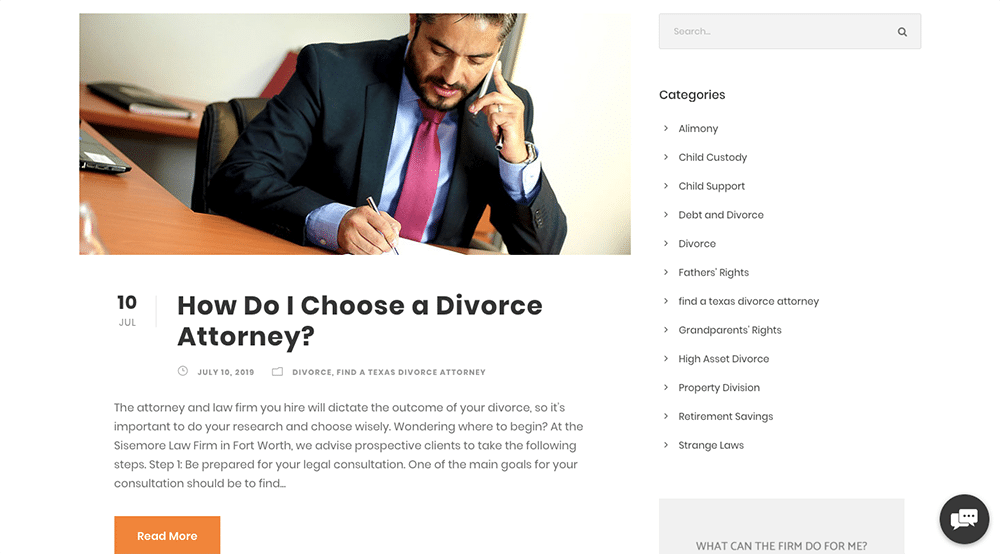One of the beautiful things about marketing today is that it doesn’t require businesses to have a flashy storefront or to take out pricey TV or radio spots to get in front of their target audience.
Content marketing, in particular, has proven of great value in creating and strengthening relationships between businesses and customers. What’s more, businesses aren’t simply relegated to blogging. There are so many different ways to boost your brand awareness and generate more leads with content. For instance:
- Blogging
- Vlogging
- Podcasting
- Live video streaming
- Authoritative reporting (e.g. custom reports, ebooks, white papers)
- Infographics
- Webinars
- Tutorials or courses
Really, it’s about identifying your strengths as a communicator and capitalizing on them to create a content marketing strategy that organically turns random passers-by into customers.
If you want to give your business a serious boost this year, content marketing is the way to go. Here’s what you need to know.
READ: How Refreshing – Five Ways to Repurpose Your Content
Why Is Content Marketing So Effective?
Typically, content marketing is free for the leads (and even customers) who encounter it. At the most, you’ll ask them for an email address in exchange for access to next Tuesday’s webinar or to send them your latest report. Even then, the trade of an email address for some seriously valuable content is a steal for many consumers — especially the kind you want to work with.
In exchange for the time, energy, and care you put into creating valuable content for your audience, your business will reap a ton of rewards, too.
1. Improve Your Brand Visibility
It’s difficult to get noticed when your business is just starting out. That’s especially so when you work in an already crowded field.
A well-thought-out content marketing strategy can change that.
By publishing and sharing content through free and publicly accessible channels, you give prospective customers the chance to discover you on their own. And something of great value is bound to stick in their minds, even if they’re not in the market to buy what you’re selling at the moment.
For example, the Sisemore Law Firm publishes blog posts regularly.

As you can see from the list of categories here, they cover a wide range of topics that their audience is most definitely looking for.
2. Clarify Your Expertise
What is it that sets you apart from your competition? For consumers who have stumbled upon your business in search engines, on social media, in online communities, and so on, it can be hard to tell the difference between you and other companies who apparently offer the same thing.
However, your content can serve as that initial differentiator.
To be clear, your content marketing shouldn’t be self-promotional in nature. It’s how you communicate your ideas and explain subjects in your area of expertise that will help you stand out from the rest.
READ: Writing for the Web – How to Make Your Copy Stand Out
3. Provide Answers to Commonly Asked Questions
Establishing authority through content is certainly helpful in building credibility with your audience. But don’t forget to make your content accessible and helpful, too.
Look at your customer base and the questions or concerns they most frequently come to you with. Use your content to answer those questions for the general public.
That way, your content not only becomes a trusted online resource, but it demonstrates how well your business anticipates your customers’ questions and concerns. And then knows how to answer them.

With video, you put an actual person behind the words and advice you’re sharing, so it becomes more like an honest conversation than a lecture.
4. Give Leads and Prospects More Reasons to Engage
One of the great things about generating content for your business is that you can use it in other areas, too.
For instance, let’s say you wrote a blog on the 10 Ways to…. You can share that post on social media, send it to email subscribers, and give it to a prospect who you’re currently in talks with.
You can also repurpose a lot of the content into different formats. Videos into blog posts. Reports into infographics. A series of blog posts into an ebook. It’s good to always have something new and valuable to share with prospects.
5. Increase the Trust and Loyalty of Your Current Customers
Your customer base is a valuable resource for your business, too. By providing free and useful content on a regular basis, your current subscribers and customers will reward you in kind with:
- Longer contracts
- Easier upsells/cross-sells
- More referrals
So, as you sit down to create something new for your audience, keep in mind that the customers who already benefit from your services or products could use your valuable insights as well. If you continue to provide them with free content they can use, their trust and loyalty will be yours.
What Does a Good Content Marketing Strategy Look Like?
Content marketing isn’t a one-and-done thing. Instead, approach your content marketing strategy with a cyclical mindset. It should look something like this:
Step 1: Research
Learn everything you can about your audience, from the top-of-the-funnel leads to the customers you currently serve. Identify the topics that matter the most to them right now.
Step 2: Plan and strategize
Pick one kind of content you want to create to encapsulate your idea. Get a look at what the top-ranking pages on Google look like. Find out what’s getting consumers excited and plan to talk about it.
Step 3: Create
Create content that your prospects and customers can’t help but engage with.
Step 4: Review and refine
If your content is written, get someone to proofread it. If it’s filmed, let your video editor take a swing at cleaning it up. You want this content to go out 100% ready to be seen by your audience.
Step 5: Share
Decide what the best channels are to share your content. Email? Social media feeds? Facebook groups? What about paid ads? Pick your channels, write your promotions, and schedule them to go out at a time when they’ll be seen.
Step 6: Analyze
Watch your content closely. Your analytics will give you a good idea of how well it performed. Don’t just focus on how many people saw it either. You want to know that they read it, how they engaged with it, and that they were the right people to get in front of in the first place.
Step 7: Repurpose
Once you’ve seen how your content has performed, start working on ways to repurpose it. Can you turn a live video stream into a longer tutorial? Can you turn a webinar into a series of blogs?
Even if you don’t want to repurpose it into something else, make sure to share your content over and over again on social and in your newsletters.
Step 8: Repeat
You should be creating content on a regular schedule to make a real impact with it.
Download this free content marketing template and get yourself into the habit of creating and sharing content with your audience.
Wrap-Up
Your website is the place to educate prospects on what you do and convince them to convert. But with content marketing, you need to take yourself out of the equation and put free and valuable resources onto the web that say:
“Hey there, I know you’re feeling this pain or have this question. Here is the answer you’ve been looking for.”
In return, you ask for nothing but their time and attention. And, really, it’s the best way to start and to continue to build on a relationship with your audience.


